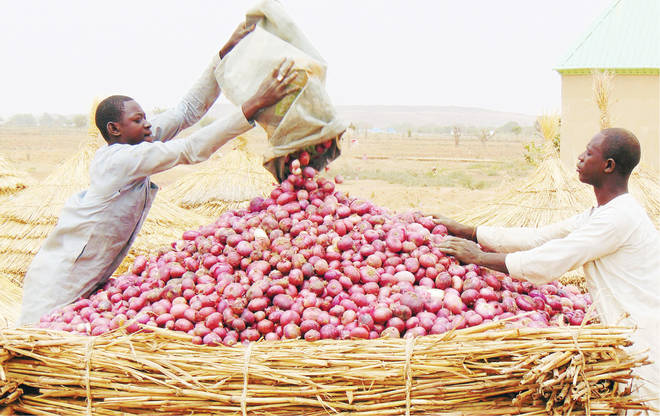Rudu: Local barn which resists both rain & rats
You see many of them in Goronyo and Wurno and they help to define the landscape. They are on the edge of little hills and that is truly a beautiful sight, or they are just on the plains. There are many young men and girls by the side, filling them with onions. The girls are […]


You see many of them in Goronyo and Wurno and they help to define the landscape. They are on the edge of little hills and that is truly a beautiful sight, or they are just on the plains.
There are many young men and girls by the side, filling them with onions. The girls are a bit shy, and the photo taken by this reporter, of a smiling girl carrying a container of onions is simply an accident, a good mistake, given the friendly riot that occurred when the camera turned in their direction. Some fill the Rudu with the crop, while others wait and ensure that the onions are so placed in the structure that none fall out. This is one aspect of life in these quiet agricultural parts of Sokoto State, and there is a permanent construction of the Rudu going on in the fertile onion growing belt.
Rudu is made from dry maize stalks, and a man can build up to ten in a day, depending on his ability Daily Trust is told. They are like miniscule barns, and they are stores for onions which are kept for 6/7 months, and then the owner empties the Rudu, sells the onions and makes a lot of money.
Many people in this part of the state are able to fund a trip to Mecca much more than their neighbours, because of the huge profits they realise from the onion trade. This trade is linked in the consciousness of the people with the possibility of going on Hajj. In Hausa these reservoirs are known as Rudu, a word which may be expressed in English as reservoir. The local vigilante group look after the Rudu, which is formed by a group of onion farmers. After the month of Ramadan a bag of onions will cost N20,000, much more than the current price, and in the vicinity of both Goronyo and Wurno after the holy month, the farmers will joyfully open their reservoirs for the lively trade to commence. Neither rain nor rats can enter the Rudu to do damage to the onion crop, a local says with some authority, and the Rudu which has a main body and something akin to a movable roof, is a unique example of Hausa architecture within farming communities.
